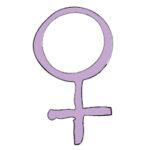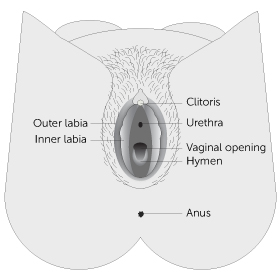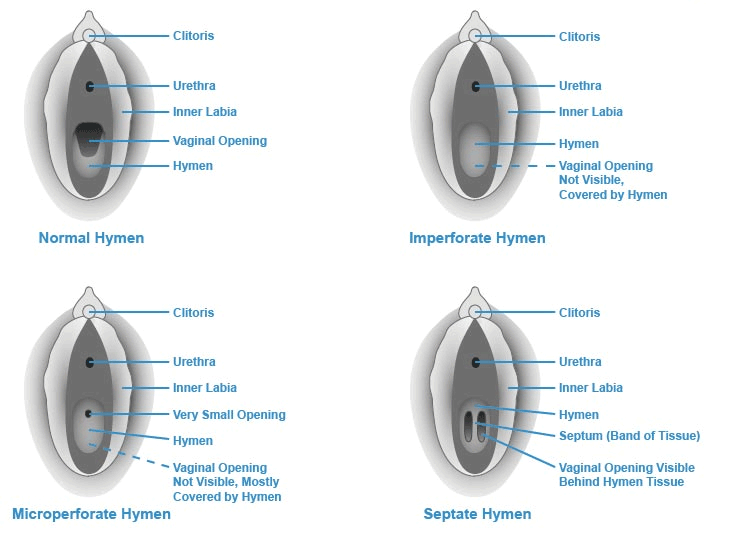
Hymen: a thin membrane that surrounds the opening to the vagina. Hymens can come in different shapes. The most common hymen in young women is shaped like a half moon. This shape allows menstrual blood to flow out of the vagina.
Imperforate hymen: An imperforate hymen can sometimes be diagnosed at birth. More often, the diagnosis is made during the teen years. An imperforate hymen is a thin membrane that completely covers the opening to the vagina. Menstrual blood cannot flow out of the vagina. This usually causes the blood to back up into the vagina which often develops into a vaginal mass and abdominal and/or back pain. Some girls may also have pain with bowel movements and trouble passing urine.
The treatment for an imperforate hymen is minor surgery to remove the extra hymenal tissue and create a normal sized vaginal opening so that menstrual blood can flow out of the vagina.

Microperforate hymen: A microperforate hymen is a thin membrane that almost completely covers the opening to the vagina. Menstrual blood is usually able to flow out of the vagina but the opening is very small. A young woman with a microperforate hymen usually will not be able to insert a tampon into her vagina and may not realize that she has a very tiny opening. If she is able to place a tampon into her vagina, she may not be able to remove it when it becomes filled with blood. The treatment is minor surgery to remove the extra hymenal tissue making a normal sized opening for menstrual blood to flow out, and to allow for use of a tampon.
Septate hymen: A septate hymen is when the thin hymenal membrane has a band of extra tissue in the middle that causes two small vaginal openings instead of one. Young women with a septate hymen may have trouble getting a tampon in or trouble getting a tampon out. The treatment for a septate hymen is minor surgery to remove the extra band of tissue and create a normal sized vaginal opening.

Our health guides are developed through a systematic, rigorous process to ensure accuracy, reliability, and trustworthiness. Written and reviewed by experienced healthcare clinicians from Boston Children's Hospital, a Harvard Medical School teaching hospital and consistently ranked as a top hospital by Newsweek and U.S. News & World Report, these guides combine clinical expertise, specialized knowledge, and evidence-based medicine. We also incorporate research and best practices from authoritative sources such as the CDC, NIH, PubMed, top medical journals, and UpToDate.com. Clinical specialists and subject matter experts review and edit each guide, reinforcing our commitment to high-quality, factual, scientifically accurate health information for young people.
